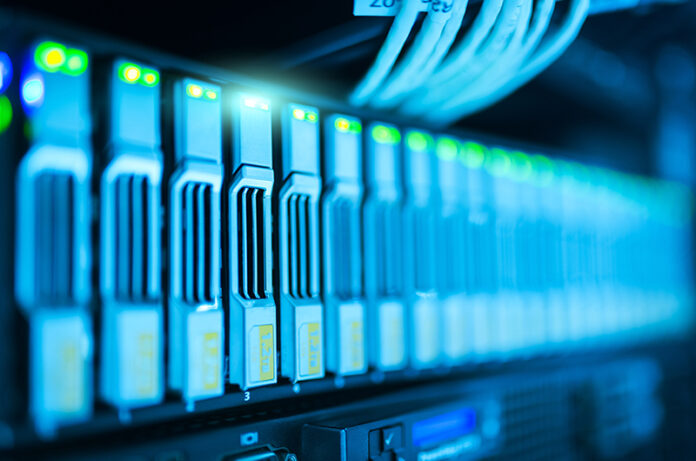What Is The Internet
The Internet is by far the most widely used computer network in the world. In 1969, it was an academic research project, but by the 1990s, it had become a global commercial network. To this day, more over 2 billion individuals in every region of the world make use of it.
The decentralized nature of the internet is one of its most defining characteristics. Nobody owns the internet, and nobody decides who is allowed to connect to it. Instead, thousands of separate organizations each run their own networks and negotiate their own interconnection agreements on a voluntary basis.
The majority of users access content on the internet through a web browser. As a matter of fact, due to the web’s ever-increasing popularity, many individuals wrongly consider the web to be synonymous with the internet. However, the web is only one of many apps that may be found on the internet. Email and the file sharing platform BitTorrent are among common uses of the internet.
Where Is The Internet Located
The Internet is divided in three parts:
The Last Mile
The portion of the internet that connects homes and small businesses to the world wide web is referred to as the “last mile.” At the moment, cable TV providers such as Comcast and Time Warner are responsible for the provision of approximately sixty percent of all home internet connections in the United States.
A growing percentage of the remaining 40 percent make use of new fiber optic cables. The majority of these cables are a part of either the FiOS program offered by Verizon or the U-Verse program offered by AT&T. Lastly, an appreciable proportion, albeit one that is steadily decreasing, still makes use of antiquated DSL service sent over telephone connections.
In addition, the towers that enable individuals to use their mobile phones to connect to the internet are included in the “last mile.” The percentage of people who use the internet using wireless connections is currently rather high and expected to continue to rise.
Data Centers
Data centers are physical locations that house several servers that are responsible for the storage of user data as well as the hosting of online apps and content. Some of them are owned by extremely successful corporations like Google and Facebook. The remainder are commercial facilities that offer their services to a large number of individual websites.
The internet connections in data centers are extremely quick, which enables them to support a large number of users all at once. It is possible to locate a data center in any part of the world; however, most data centers are found in rural areas because the cost of both land and energy is lower there. To give just one illustration, Google, Facebook, and Microsoft have all built enormous data centers in the state of Iowa.
The Backbone
The backbone is made up of long-distance networks, which are primarily comprised of fiber optic cables, and their primary function is to transport data between data centers and end users. The market for backbone is marked by intense competition.
Internet exchange points are often located in big cities and are used regularly by backbone providers to connect their own networks together. When backbone providers have a presence at IEPs, it is much simpler for them to improve their connections to others and to develop new relationships.
Who Created The Internet
ARPANET, an academic research network that was first supported by the Advanced Research Projects Agency of the United States Department of Defense, was the precursor to the internet (ARPA, now DARPA). The ARPA administrator Bob Taylor served as the project’s leader, and the ARPA administrator Bolt, Beranek and Newman was responsible for the construction of the network. In 1969, it started conducting business.
The year 1973 marked the beginning of Vint Cerf and Bob Kahn’s work as software engineers on the development of the next generation of networking standards for the ARPANET. The current internet was built on top of these protocols, which are collectively referred to as TCP/IP. On January 1, 1983, ARPANET made the transition to adopting TCP/IP instead.
The National Science Foundation took over from the military as the primary funder of internet research and development during the 1980s. From 1981 until 1994, the National Science Foundation provided funding for the long-distance networks that were used as the backbone of the internet. The Clinton administration handed up ownership of the internet’s underlying infrastructure to the private sector in the year 1994. Since that time, it has been governed and supported by the private sector.
Why is Al Gore popular for creating internet?
It is common practice to attribute the development of the internet to former Vice President Al Gore. However, in an interview with CNN in 1999, Gore actually stated, “I took the initiative in establishing the internet.” Because of this statement, many people made fun of Gore.
However, in the year 2000, TCP/IP creators Bob Kahn and Vint Cerf signed letters of support for Al Gore. These two men are often credited with inventing the internet. They contend that Gore was “the first political leader to realize the importance of the internet and to encourage and assist the development of its infrastructure.”
Who is in charge?
Nobody is in charge of the internet. A decentralized network of networks constitutes its organizational structure. Thousands of businesses, educational institutions, and other organizations all over the world run their own networks and share traffic with one another based on voluntary interconnection agreements.
An organization known as the Internet Engineering Task Force is in charge of managing the shared technical standards that are necessary for the operation of the internet. The Internet Engineering Task Force (IETF) is an open organization, which means that anyone is welcome to attend meetings, suggest new standards, or recommend changes to already established standards.
Although it is not mandatory for anybody to accept the standards recommended by the IETF, the organization’s use of a consensus-based decision-making process helps to increase the likelihood that its suggestions will be taken up by the larger internet community.
There is a common misconception that the Internet Corporation for Assigned Names and Numbers (ICANN) is the organization responsible for the governance of the internet. The Internet Corporation for Assigned Names and Numbers (ICANN) is the organization that is in charge of assigning IP addresses and domain names, such as vox.com. On the other hand, ICANN is not responsible for regulating who can connect to the internet or what kind of data can be transmitted over it.

How Wireless Internet Works
In its early days, users connected to the internet over a network of actual connections. But in more recent times, access to the internet via wireless methods has become more widespread.
WiFi and cellular internet connection are the two most common types of wireless internet connectivity. The complexity of WiFi networks is often low. Access to the internet can be gained in a house or place of business by purchasing wifi networking equipment, which is readily available to everyone. Unlicensed spectrum refers to electromagnetic frequencies that are open to the public and can be used by anybody without incurring a fee. WiFi networks make use of this spectrum. There are stringent limits placed on the power of wifi networks (and, consequently, their range), which are designed to prevent networks belonging to neighbors from interfering with each other.
Cellular networks tend to have a higher degree of centralization. They accomplish this by partitioning the service area into individual cells. In the most densely populated places, a single cell may only cover one city block, whereas in more rural areas, the area covered by a single cell may span several miles. In the middle of each cell is a tower that supplies the devices in that area with the necessary services. When a device transitions from one cell to another, the network will immediately hand off the device from one tower to another. This will let the user to continue interacting without any interruptions.
Because of their size, cells cannot make advantage of the unlicensed, low-power spectrum that is utilized by wifi networks. Instead, cellular networks make use of spectrum that has been licensed specifically for their application. Since there is a limited amount of this spectrum available, it is typically acquired through an auction. Since the first wireless auction was held in 1994, the United States Treasury has received tens of billions of dollars in income as a result of wireless auctions.
What is an ip address
On the internet, computers communicate with one another through the use of numeric addresses known as Internet Protocol addresses. As an example illustration of an ip address looks like this 227.385.37.66
The Internet Corporation for Assigned Names and Numbers (ICANN) has a section called the Internet Assigned Numbers Authority that is in charge of assigning IP addresses and ensuring that no two separate entities use the same address.

What Is A Web Browser
A computer program called a web browser is needed in order for users to be able to download and see websites. Desktop computers, tablets, and mobile phones may all utilize web browsers to access the internet.
Mosaic, which was developed by academics at the University of Illinois, was the first web browser to gain widespread popularity. The members of the Mosaic project relocated to California to start Netscape, which developed the first web browser to be successful on a commercial scale in 1994.
Internet Explorer from Microsoft quickly became the more popular web browser, but an open-source version of Netscape’s browser eventually evolved into the current version of the Firefox web browser. In 2003, Apple introduced its own web browser called Safari, and in 2008, Google introduced its own web browser named Chrome. By 2015, Google Chrome had established itself as the most widely used web browser, holding a market share of approximately 50 percent. Additionally, Internet Explorer, Firefox, and Safari each held a sizeable portion of the market share.
What is W.W.W
The World Wide Web is one of the most common formats used for publishing content on the internet. Timothy Berners-Lee, a computer programmer working at the European scientific research organization CERN, is credited with the creation of the web in the year 1991. In comparison to other online programs, it had a graphical user interface that was both more powerful and easier to navigate. Users were able to navigate from one document to another with the click of a single mouse button since the web enabled hyperlinks.
The World Wide Web has evolved into a more advanced medium that now supports images, audio, video, and content that can be interacted with. Around the middle of the 1990s, businesses like Yahoo and Amazon.com started to establish web-based enterprises that were successful financially. Full-featured web programs like Yahoo Maps and Google Docs were developed throughout the 2000s and made available online.
Berners-Lee established the World Wide Web Consortium (W3C) in 1994 with the intention of making it the official standards body for the web. He continues to serve as the director of the W3C and is responsible for overseeing the development of web standards. On the other hand, due to the nature of the web as an open platform, the W3C is unable to coerce anyone into adopting its suggestions. In actuality, the businesses that make the most popular web browsers—companies such as Microsoft, Google, Apple, and Mozilla—are the ones that wield the most sway over the World Wide Web. Any technologies that these four organizations decide to adopt will eventually become de facto web standards.
As a result of the web’s meteoric rise in popularity, many people now consider “the web” to be identical with “the internet.” However, technically speaking, the web is merely one of many apps that can be run on the internet. Email and BitTorrent are two further examples of applications.








